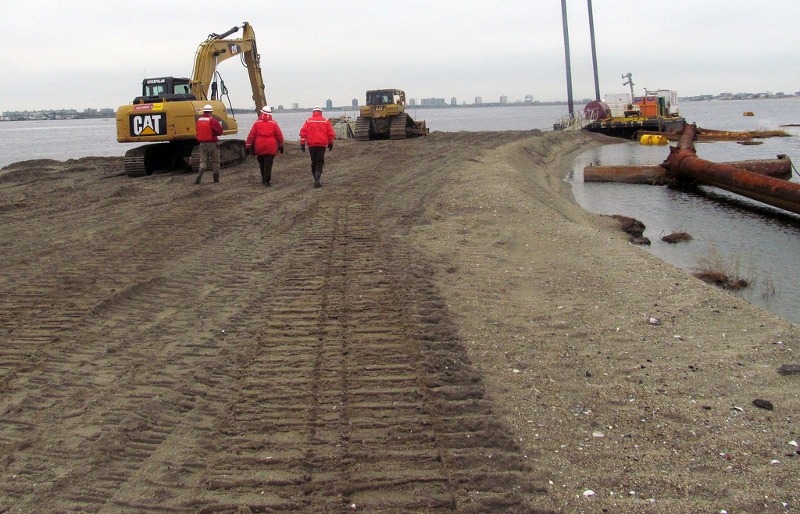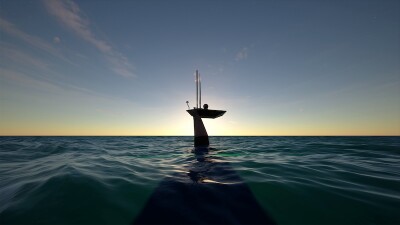The Corps of Engineers will get more money for coastal beach replenishment and flood control projects, and more leeway for creatively using sediment from navigation dredging projects.
Little-noticed provisions in the final version of the Water Resource Development Act recently passed by Congress authorize new efforts for the Corps to use sand and other sediments to build up beaches, dunes and wetlands threatened by sea level rise. Potentially it could bring even more work for the dredging industry, beyond some $2.5 billion already authorized for the Corps’ North Atlantic Division.
The legislation sets the stage for one pilot project where the Corps can choose 10 project areas where sediment would be used beneficially with a federal cost share — rather than being paid for entirely by state or local government. Those projects could use sediment from both federal and state dredging projects.
Critically, the provision also gives those projects more allowance to deviate from the “Federal Standard” set in the early 2000s, which required use of lowest-cost option for sediment placement, or alternatively partner agencies taking on more cost for beneficial re-use.
“Sediment is a critical resource for building and restoring protective beach and dune systems and restoring coastal environments,” said Derek Brockbank, executive director of American Shore & Beach Preservation Association, an advocacy group that lobbies in favor of such projects.
That part of the WRDA legislation reflects the Corps’ own strategic thinking, as Lynn Bocamazo, chief of the Corps of Engineers’ Hurricane Sandy Relief Branch, outlined at the ASBPA’s national conference in late October at Long Branch, N.J.
A burst of funding authorized after Hurricane Sandy struck the mid-Atlantic in 2012 will be winding down, and the Corps must prioritize future shore protection needs. Bocamazo said that will include taking a larger, regional view across the agency’s various projects — navigation channels, beach-building and ecosystem restoration — to make more efficient use of sediment.

An aerial view of three Jamaica Bay Marsh Islands in Queens and Brooklyn, N.Y., restored in 2012 by the U.S. Army Corps of Engineers, New York District and regional partners by placing clean sand over roughly 75 acres of marshland. USACE photo.
Despite many Republican members’ professed skepticism of climate change, Congress explicitly directed the Corps to prioritize feasibility studies to protect coastal infrastructure from rising sea level. Along with beach replenishment, that includes tidal marsh restoration, as the Corps’ New York district has done in wetlands around New York Harbor and Long Island Sound.
Some $420 million went into shore protection projects from Rhode Island to Virginia after Hurricane Sandy and the new water resources bill could help set in motion a similar long-term effort for the states from North Carolina to Alabama. It authorizes the Corps’ South Atlantic Division to identify risks and vulnerabilities to increased hurricane and storm surge damage as a result of sea level rise.





